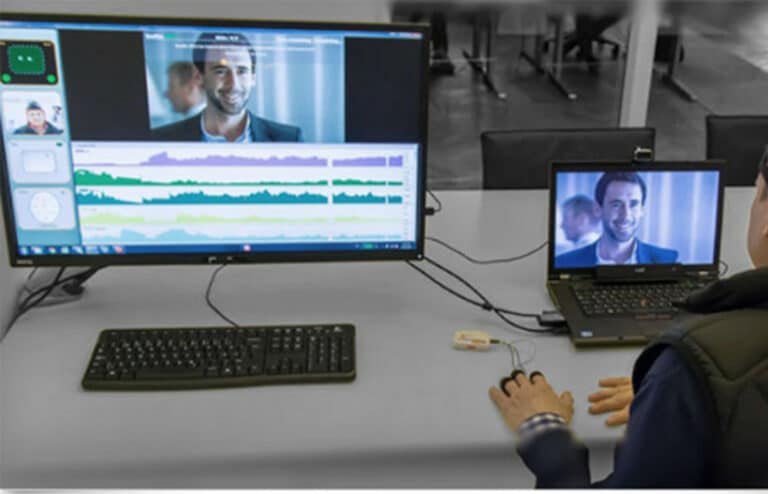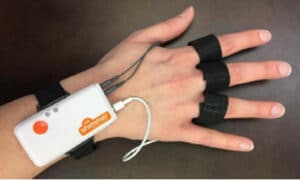Background & Objectives
Human emotion is a complex, conscious experience that produces involuntary changes in our physiology. This biological response to emotional arousal can be detected by monitoring changes in heart rate and skin conductance. Heart rate variability and skin conductance are expected to increase during emotional arousal.
Biometrics is a vastly expanding field in the forensic sciences. This research into emotion and the resulting physiological processes aims to benefit police services. Measuring the heart rate and skin conductance of individuals during interviews may uncover their emotional state. With additional research, this information can be used to improve lie-detecting technology. Observing patterns of emotional arousal can also be used to assist in establishing criminal intent in a suspect. Researchers can further implement these theories to victim and eye-witness interviews, studying the effect of emotional arousal on the accuracy of detail recollection. The results of this research can have an indirect influence on many technological advances in biometrics and the forensic sciences.

Methods
11 respondents, aged 20-23, were shown seven videos, each representing one of the seven basic human emotions: joy, sadness, anger, surprise, disgust, contempt, and fear. The respondents’ heart rate was measured with a PPG sensor, and their skin conductance was measured with a galvanic skin response (GSR) sensor as they watched the seven video stimuli. These sensors are components of the Shimmer3 research platform that was positioned on the respondents’ non-dominant hand. The facial expressions of the respondents were also monitored using a Logitech HD webcam.
The respondents were asked to return 12-16 days later to re-watch the seven videos. Their heart rate and skin conductance were monitored again at this time.

Integrating Shimmer
Integrating the Shimmer3 GSR+ sensor into a study like this is very straightforward. Once the participant was given a complete explanation of the purpose and procedures for the study, the participant was fitted with Shimmer’s GSR sensor. The participant was set up with the sensor on their non-dominant hand and given an explanation of the physiological process each electrode was monitoring. The PPG velcro ring was wrapped around the respondent’s ring finger, while the GSR velcro ring was wrapped around the respondent’s index and middle fingers. The actual GSR sensor was fastened around the wrist using a wrist band, allowing it to sit on the dorsal side of the hand. Figure 2 shows the sensor setup on the participants.
Shimmer’s platform also makes data transfer quite simple. For this study, the sensor was set up to collect data to the in-built SD card on the sensor and also stream the data live over Bluetooth. The raw SD card data was imported into the software after data collection had finished and exported to a csv file for analysis. Streaming the data live over Bluetooth was also key for the study as it allowed the researchers to get an understanding of the participant’s reaction to the content in real-time. The researchers were able to event mark the different pieces of content with the streamed data, which made analysis a lot easier. The researchers were also able to time-sync the annotated data with the video feed of the participant facial reactions, which helped add even more content to the data collected.

Summary and Future Research
The objective of this research was to compare the results of the initial exposure to that of the secondary exposure. There was variation in the physiological processes across viewings for all respondents. Some respondents had a higher average heart rate during the first viewing. In contrast, some respondents had a higher average heart rate during the second viewing. The skin conductance widely varies in a similar pattern.
Respondents that experienced a phasic peak in their galvanic skin response (GSR) in response to a stimulus during both viewings either had an increase or decrease in peak quantity.
The correlation between the responses experienced during the two viewings were established to analyse the impact the first viewing had on the physiological response in the second viewing. The perfect positive correlation is +1.0. In the context of this study, this correlation would imply that the physiological response the respondent had during the first viewing would be the same during the second viewing. The overall average correlation was 0.1069, indicating a weak positive correlation in heart rate from the first and second viewings of the video stimuli.

